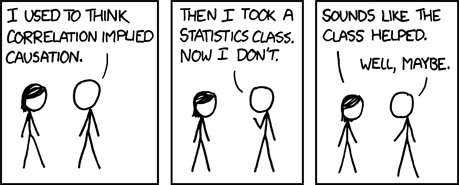Let's start with a little-known fact: Motorcycles do not emit less than cars. There's a wealth of evidence to support this but if you want a snapshot, just look at the current EPA regulations -

This is how many grams of hydrocarbons + nitrogen oxides new road-legal motorcycles are allowed to emit per mile traveled, viewed alongside the comparable figures for large SUVs and cars. The California Air Resources Board estimates that even though motorcycles travel less than 1% of the miles covered by Californians, they account for about 13% of the smog - an astonishing figure.
This is surprising, because motorcycles are fantastically energy-efficient - both tank-to-wheel and well-to-wheel, to reuse terminology from my previous post. Even heavy Harleys and hardcore Hayabusas seldom get less than 35mpg. My own 2008 Yamaha WR250R gets an EPA-estimated 71mpg.
(as we can see, energy efficiency and air emissions are two distinct concepts of sustainability. In this post, I limit myself to discussing air emissions, to keep things in scope)
There's a sliver of good news for two-wheeled environerds, however: As CO2 emissions seem to scale proportionately with fuel consumption, motorcycles do emit 25-40% less carbon dioxide than comparable cars. As we know, CO2 is the chemical compound most commonly associated with global warming (both natural and anthropogenic).
But how does it make sense that ultra-lightweight motorcycles, powered by essentially miniature versions of the engines found in cars, emit so much more nitrogen oxides and hydrocarbons, even though they get great gas mileage and emit substantially less CO2? The answer starts with catalytic converters.
Go stick your head under your car and look for one of these box thingys sitting somewhere along your rusted exhaust pipe. These little cans have been on every street-legal car in the US since 1975. Catalytic converters are useful because they chemically reduce smog-causing nitrogen oxides to relatively innocuous elements, nitrogen and oxygen. They also oxidize toxic carbon monoxide and oxygen into carbon dioxide, and they turn leftover hydrocarbons into more carbon dioxide and water vapor. Modern 3-way catalytic converters have drastically reduced the annual emission of nitrogen oxides from vehicle exhausts in the last couple of decades alone; this has had a tremendous impact in helping replenish the ozone layer and putting a lid on the severity of acid rain in the US. These little cans are great, but they're not magic - they convert harmful combustion byproducts (nitrogen oxides and unburnt hydrocarbons) into somewhat less harmful chemicals (principally, CO2). Despite this tradeoff, they do great net environmental good because the additional quantity of CO2 emitted as a result of their use is far less harmful than the nitrogen and unburnt hydrocarbons that would spew out of exhausts otherwise.
Catalytic converters aren't the only emissions control systems on your car. Other devices help too - like air injection systems (which help catalytic converters work more efficiently at lower temperatures) and evap canisters (which keep the noxious chemicals in your gasoline from evaporating out of your tank into the atmosphere). These have been a success story in cars for years; why don't they work on motorcycles?
It turns out these gadgets - in particular, catalytic converters - are pretty fidgety. Catalytic converters alone have to contain precious metals like gold and titanium to function properly and this makes them quite expensive - typically adding $1,000 or more to the price of a new car. They're also heavy, bulky, and some only work above a certain operating temperature (that's why some cars idle really fast on startup - to warm up the emissions equipment quickly).
All of these characteristics of emissions controls - bulky, heavy, expensive, temperamental - have been made to work in the context of cars that weigh 4,000lbs and cost $20,000, but they are antithetical to everything motorcycle. They don't scale well in applications smaller than a car; a good catalytic converter, along with a host of other emissions-regulating components, might only add 5-15% to the weight and cost of a car, but the same system on a motorcycle could possibly double the MSRP, choking the small engine and burdening the lightweight chassis with a lot of proportionate extra mass.
In addition, motorcycles models in America are typically sold in far fewer quantities than car models, so bike manufacturers lack the incentive to invest substantial fixed costs into refining their engines to reduce emissions. Gas bikes have to scrimp on their emissions equipment, and they pollute the air accordingly.
It gets worse when you consider how often motorcycle exhausts are gutted or replaced after leaving the factory. There exists an entire subculture of humans who live for opportunities to bolt more shiny things to their shiny rides.
I have not been able to locate a number for exactly how many two-wheelers run completely derestricted exhausts, but my anecdotal observations suggest that a large proportion of riders do it - every time you hear a motorcycle roar past at more than ~84 decibels, it's likely running an aftermarket can (the maximum sound law varies by state, but manufacturers usually just produce one model that is 50-state legal). This market for aftermarket exhaust systems is composed of well over 200 companies - each one shinier, louder and more pollutive than the last.
These systems, labeled for "show" or "closed-course use only", are frequently sold to street users with a wink and a tacit agreement not to inform the authorities. Modifying your vehicle's emissions equipment is illegal in the US (even for non-road engines) and aftermarket pipes are seldom equipped with even the pathetic catalytic converters found in stock motorcycle exhaust pipes.
While sometimes these exhausts are installed for purely cosmetic reasons (the vanity of the typical chromed-out hot-rodder cannot be overstated), sometimes riders have no choice but to rip out the anti-emissions components and replace them with derestricted substitutes. This is because some motorcycles - mostly offroad-biased competition bikes - are too "choked up" by their anti-emissions gear to even run properly. For example: The KTM EXC enduro machines, street legal since 2007, are infamous for being practically unrideable from the dealership. The evap canisters cause the bikes to stall at intersections, while the excessively lean air-fuel mixture causes erratic engine performance and overheating. Of course, the first thing a rider does after buying such a bike is rip off all the emissions "junk", rejet the carburetor so it burns more fuel and replace or derestrict the exhaust.
This is a lose-lose-lose scenario - manufacturers are forced to charge more for emissions components that riders consistently scrap, so these bikes are still dumping loads of noxious chemicals into the air and nobody's happy.
So, in answer to our title question: It's not just that gas motorcycles are inherently pollutive - it's a complete failure for our laws to correspond with either the goals of sustainability or the interests of riders. The status quo is not merely unsustainable; it's nonsensical.
It's true that there have been some technological gains in recent years that limit the insanity - most notably, the gradual replacement of mechanical carburetors with electronic fuel injectors for fuel delivery has allowed for very precise control of the quantity of atomized gasoline that enters the cylinder during the combustion cycle. Done well, this reduces emissions without burning up the engine or ruining its performance.
There's still a long way to go before gas-powered motorcycles can earn their reputation for environmental friendliness and efficiency. The question that remains is: Can motorcycle emissions control technology move faster than the politics of sustainability, or is the gas-powered two-wheeler soon to go the way of the banished two-stroke?











